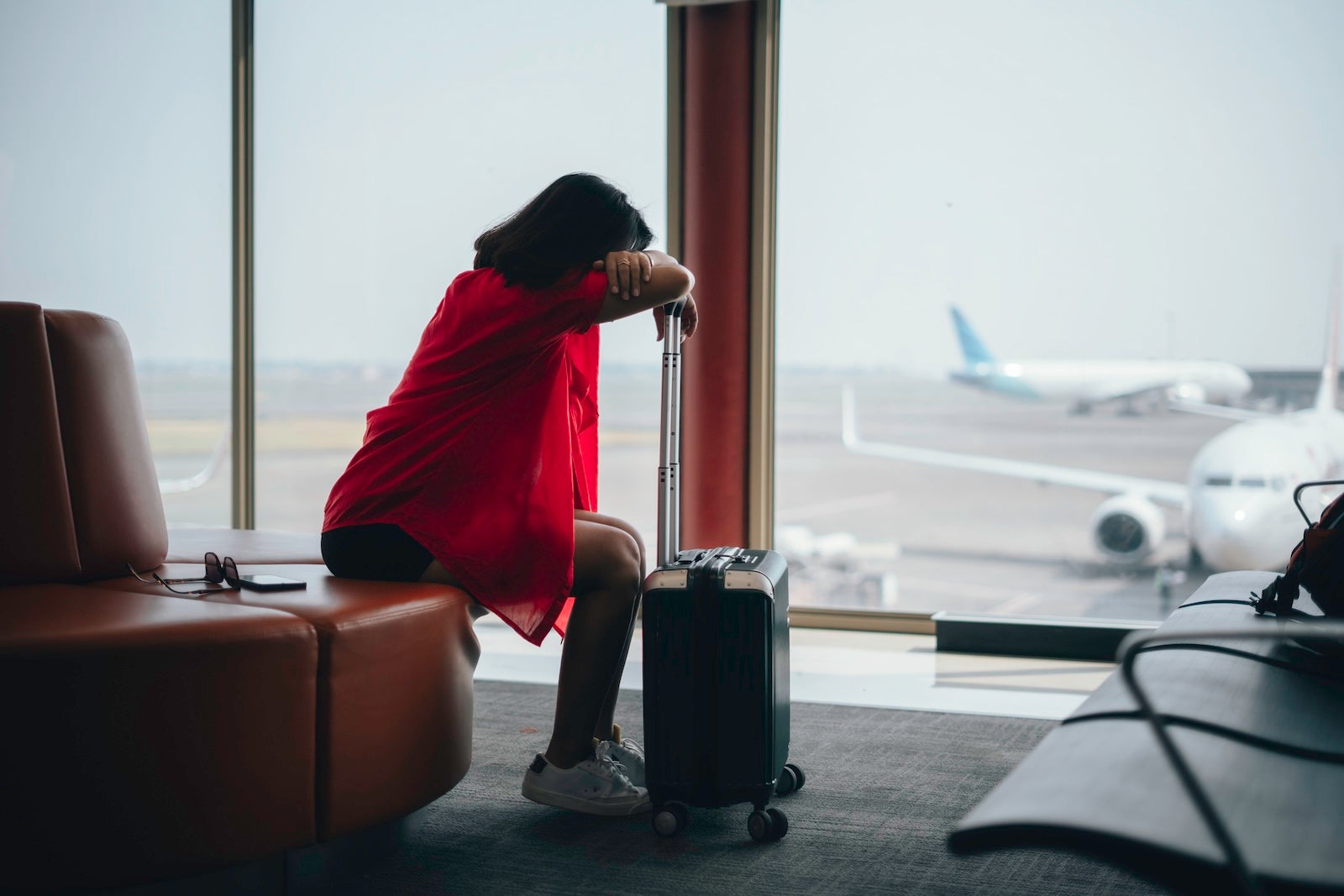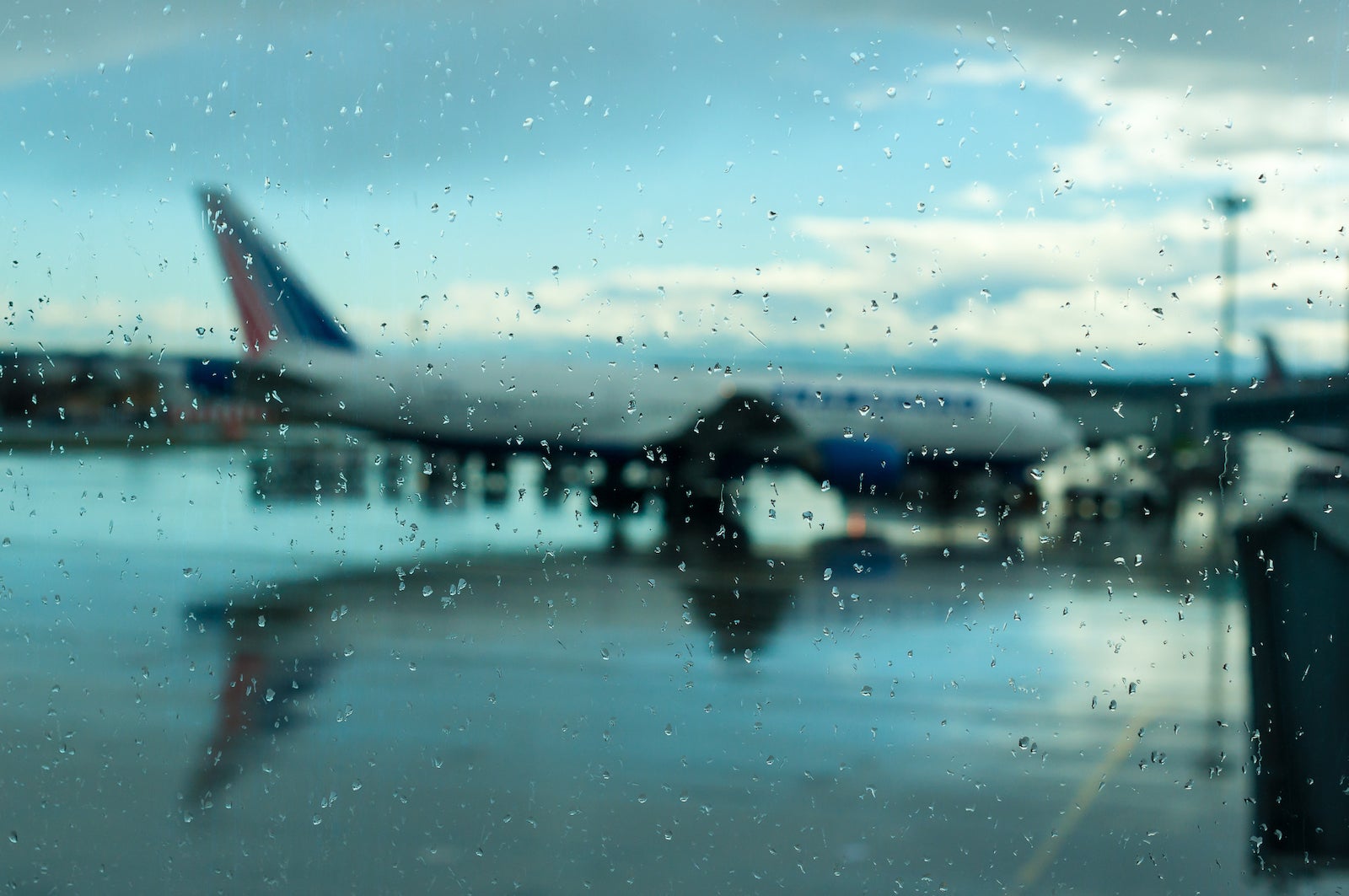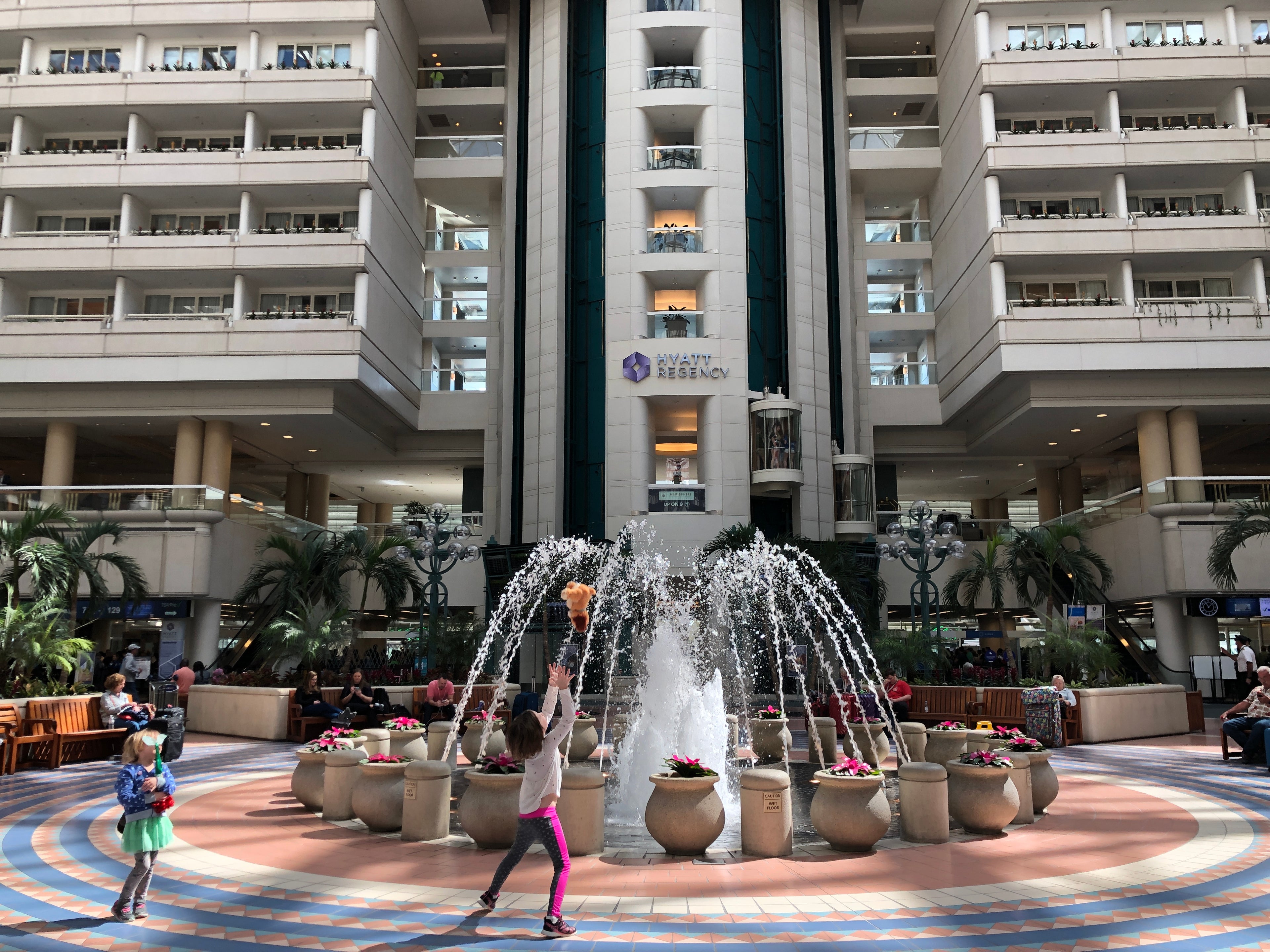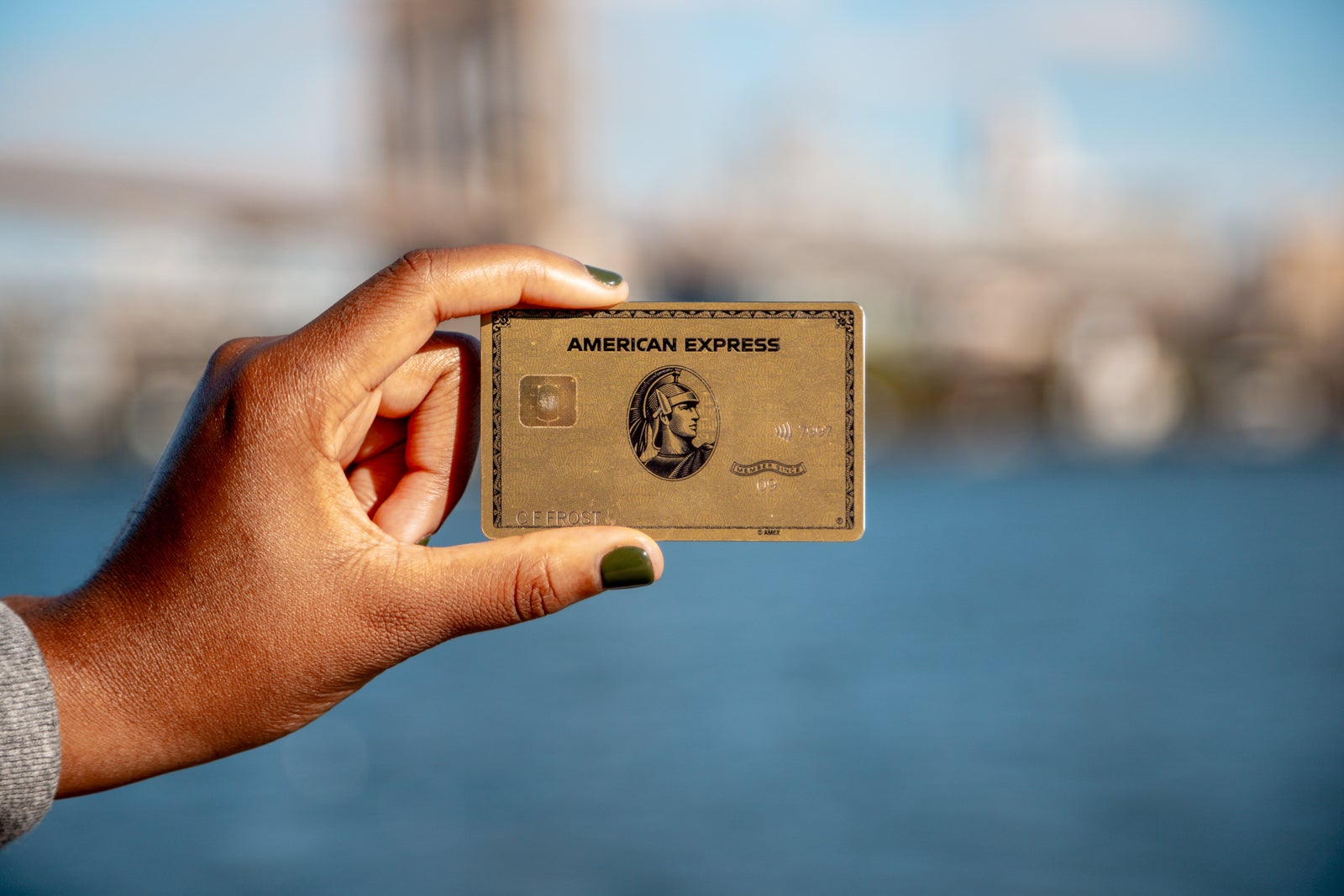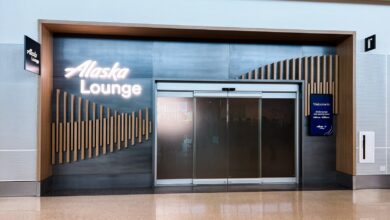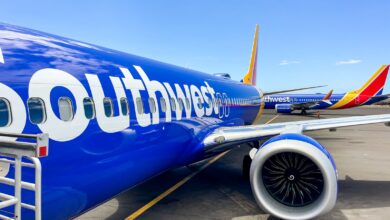Flight canceled or delayed? Here’s what to do
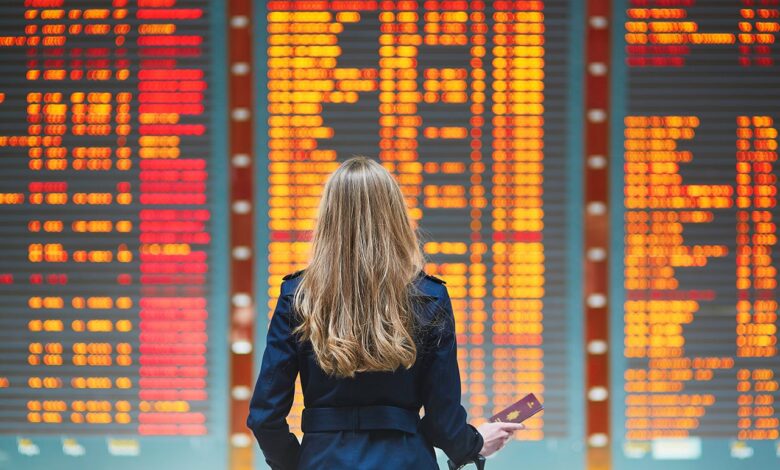
On average, about one in five flights were delayed in the U.S. last year, and between 1% and 2% were canceled. Those numbers are far better than those in 2022, but delays and cancellations remain a reality of air travel — whether due to bad weather, mechanical issues or scheduling problems.
The year is far from over, but 2024 has already brought plenty of headaches, ranging from the “explosive” decompression and subsequent grounding of a Boeing 737 MAX 9 to winter storms snarling air traffic across the country.
In case you experience flight delays or cancellations, here are tips on how to decrease your chances of getting stuck and increase your odds of arriving at your destination as quickly as possible.
How to find out if your flight might be delayed
In the current era of full flights and easily available information, don’t wait for the airline to tell you there is a problem.
You can keep an eye on general flight trends across the country by using FlightAware, which gives you a good overview of how a day in the sky looks.
Flight Aware’s “Misery Map” focuses on delays. In the 24 hours before travel, you can manually check the status of your flight on your airline’s website. If possible, be sure to check where the plane is coming from. Even if the conditions are clear where you are, there’s a good chance your plane won’t get to you on time if it’s sitting in a snowstorm somewhere else.
It’s also a good idea to opt in to receive flight notifications with your airline. Here are details on that process with American Airlines and United Airlines.
You can get flight status updates sent directly from FlightAware as well.
Be sure to download your airline’s app on your phone, too. Many airlines will show you where your “incoming plane” is currently. In fact, your airline’s app often has more up-to-date flight departure information than what’s on the departure and arrival boards at the airport.

Daily Newsletter
Reward your inbox with the TPG Daily newsletter
Join over 700,000 readers for breaking news, in-depth guides and exclusive deals from TPG’s experts
When to arrive at the airport if your flight is delayed
This can be a tricky one. If your flight is still listed as “on time” when you check the app, leave for the airport according to the original schedule.
Even if your flight shows as delayed in the app, that status is subject to change. So, in most cases, it’s best to be at the airport ready to go at the originally scheduled time. We’ve certainly heard stories where a flight is delayed only for it to depart sooner than expected, leaving some passengers behind.
Sometimes, you’ll receive confirmation well in advance, letting you know if your flight will be significantly delayed. Say you are at an airport that isn’t a hub for the airline you are flying (meaning less chance of spare planes and crew), and the plane that will operate your flight is nowhere close to arriving at the airport; then, there are good odds that your posted delay will be a real delay. However, it’s still safer to be at the airport, just in case.
Bad weather can sometimes cause a temporary ground stop at the airport. As soon as the weather improves and the stop lifts, airlines will try to get their flights off the ground ASAP. So, it’s best to be close by should things change on short notice.
Related: 3 things to do if your flight is delayed
Know your rights
It’s important to know what your rights are as an airline passenger. For instance, if your flight is canceled or significantly delayed and you choose not to travel, you’re entitled to a refund, no matter the reason for the disruption.
However, if you get stranded overnight, you may also be able to recoup costs for extra meals, hotel nights and ground transportation.
In recent years, the U.S. Department of Transportation has increased the pressure on airlines to clearly disclose what they’ll provide to passengers in the event of cancellations or long delays. You’ll find these guarantees on FlightRights.gov, the DOT’s dashboard.
On this website, you’ll find a rundown of what airlines guarantee in the event of “controllable” delays and cancellations — disruptions within an airline’s control. Keep in mind that these “controllable” situations typically exclude weather-related problems.
When looking at the dashboard, you’ll quickly see that some airlines promise to do more than others regarding overnight hotel stays, ground transportation, credit vouchers and rebooking on partners. Give that list a look not only when you’re deciding which airline to book with but also in the event of a long, controllable delay or cancellation. This way, you’ll know what the airline has promised to do in those situations. You can file a complaint with the DOT if the airline doesn’t hold up its end of the bargain.
Related: DOT fines Southwest up to $140 million over 2022 holiday meltdown
What to do if there is bad weather
Monitor weather patterns a few days before your flight to see if any major systems are anticipated. It’s vital to check the forecast the night before and on the day of travel to see how any issues could affect your departure and arrival airports.
Again, be sure to opt in to receive updates on your flight’s status. If you know bad weather is coming later in the day, ask for an earlier flight if you can. Alternatively, leaving the night before the weather arrives is also a good idea if you want to minimize the risk of delays.
Many airlines will issue travel advisories during (and ahead of) severe weather problems like impending blizzards, ice storms or even heavy thunderstorms. These advisories allow travelers to make changes even when flying on a restrictive ticket that typically can’t be altered — like a basic economy fare.
In some cases, the airline may proactively change your flight.
If you know bad weather is on the horizon, visit your airline’s website and look for an advisory notice or call the airline to discuss options. If an airline gets ahead of weather issues, you may be able to reschedule your flight by a few days in either direction with no fees. Additionally, you can try asking for a nonstop flight if the weather jeopardizes your connecting flight.
However, if the airline hasn’t issued its own advisory, you could pay out of pocket for any fare differences if you really need to be proactive in changing plans to get where you are going.
Related: How the weather affects your flight — the atmosphere and winds
What to do if your flight is delayed or canceled
In 2024, standing in a long line at the airport or waiting on hold by phone is usually not the best (or most enjoyable) way to rebook when a flight is canceled or delayed.
Most major airlines will allow you to rebook yourself using a mobile app. You may be able to rebook at a new flight time or even to a new nearby origin or destination city.
For that reason, the airline app should probably be your first stop after you learn of a major hiccup in your travel plans.
That being said, there are times when automated rebooking systems are not your best option. Sometimes, the only automated option is for a red-eye flight or a future flight that will head to your destination several days later. That’s especially true when many flights are full.
If you can’t find what you need on the app, find an airline employee who can work the ticketing desk. Look at their uniforms and name tags to ensure you get a ticket agent and not a baggage handler or similarly outsourced contractor who is less likely to be able to help.
If the U.S. call center has a long hold time (which happens during widespread issues), you can try dialing an international number for faster service. You can often find those numbers on the airline’s website. You might also find success reaching out to an airline on the social platform X or other social media channels when customer service lines are busy.
For example, when the first leg of an American Airlines flight from New York City to Arkansas just before Christmas was delayed, TPG editor Madison Blancaflor missed her connection. She contacted American Airlines on X to help ensure she was rebooked on the earliest possible flight. She still had to endure a long layover in Charlotte, but it was better (and less stressful) than rushing to the customer service desk to try and rebook upon arrival in Charlotte.
Additionally, some airlines have live online chat or text functions that can be quicker than trying to reach the airline by phone.
If there are no reasonable booking options left with your carrier, ask if there are options on another airline. If the delay is weather-related and you are on a basic economy ticket or are flying on a low-cost carrier, there might not be other airline options at your fingertips. Still, it’s worth asking and — if possible — presenting available options you have researched yourself.
Related: Don’t wait on hold: Here’s how to reach airline customer service quickly
Retreat to a lounge
If you have airline lounge access at a United Club, Delta Sky Club or something similar, you can head there for help from experienced agents with potentially shorter lines. Use it as a spot to gather your thoughts, charge your phone and make level-headed decisions. The agents there might be able to help you change or track your flight, as there are usually agents with that knowledge and ability in the airline lounges.
In third-party lounges, such as an American Express Centurion Lounge, you won’t be able to get that type of airline-specific assistance, but you’re probably in a better spot to wait out the storm than in a crowded terminal.
Related: Best credit cards for airport lounge access
Rebook your flight
Sometimes, if you really need to get home, you may need to do the work and pay for a new flight yourself.
One time, during a delay while traveling from Orlando to Houston, United Airlines couldn’t get me home for more than 24 hours after my initial flight was canceled. So, I found a nonstop Southwest Airlines flight with one last seat available for $463.
Even though rebooking yourself will not typically be covered by any insurance provider or carrier, I went for the Southwest option. I got my original United ticket refunded, which at least offset some of the pain of a new ticket. In my case, it was worth controlling my own destiny and not being stuck.
Your credit card’s built-in trip delay or trip cancellation coverage can help with many unexpected expenses in the face of delays and cancellations, but a brand-new flight home isn’t likely to be one of them. Still, in some cases, it may be the only way home for a while, so you’ll have to weigh the pros and cons.
Fortunately, many airlines now will allow you to cancel main cabin tickets and above and, at the very least, get airline trip credit, which you can use to book a future flight. (This typically does not apply to basic economy fares or low-cost carrier flights.)
Related: Should you get travel insurance if you have credit card protection?
Check airport hotels
While thinking through what to do in case of a flight delay or cancellation, consider your options at airport hotels, which can fill up if there are major delays and cancellations. Sometimes, it is best to call it a day, get some rest and try again in the morning.
Airport hotels are generally pretty affordable on points, although cash rates can skyrocket when demand surges. Accommodations are typically covered by trip delay protection in the event of cancellations or very long delays via cards like the Chase Sapphire Reserve® and The Platinum Card® from American Express.*
*Eligibility and benefit level vary by card. Terms, conditions and limitations apply. Please visit americanexpress.com/benefitsguide for more details. Underwritten by New Hampshire Insurance Company, an AIG Company.
Related: Why my favorite use of Hyatt points is a Category 1 airport hotel
Show up early for standby flights
If you know in advance that your flight will be canceled or delayed, heading to the airport early could score you a same-day standby flight that can get you to your destination early.
For example, a TPG staffer used this strategy to avoid getting stuck overnight when a hiccup with his flight from Austin to New York City would have caused him to miss a connection in Dallas. Since he had A-List status with Southwest, he showed up at the airport a bit early and did a free same-day standby onto an earlier flight that connected to a different city. His A-List status bumped him to the top of the standby list and onto the flight.
Getting on the standby list isn’t foolproof, especially if the earlier flight is almost full. This is a case where having elite status can help since you’ll have priority over non-elite travelers. Additionally, some airlines charge a fee for non-elite travelers to get on the standby list for an earlier flight.
Related: The best credit cards to reach elite status
Book with credit cards that provide travel protection
The hard truth is that at least 99 times out of 100, in the event of airline delays and cancellations caused by weather, the airline itself is not going to help you out with the extra expenses you incur due to the change in plans since the weather is outside of their control. Travel insurance may have your back if you purchased it, but beyond that, the credit card you booked your flight with may also be able to reimburse you for unexpected expenses due to your flight delay or cancellation — even if it was caused by weather.
Many rewards credit cards help confer valuable travel protections when you have a delayed or canceled flight (if you used one of them to book your flight). Below are just a few examples of cards that provide some built-in coverage:
*Eligibility and benefit level varies by card. Terms, conditions and limitations apply. Please visit americanexpress.com/benefitsguide for more details. Underwritten by New Hampshire Insurance Company, an AIG Company.
Related: The best credit cards with travel insurance
Bottom line
Last but not least, we recommend being firm when making travel decisions when there’s a delay or cancellation. The longer you wait to switch flights or book a hotel, the greater the chances you’ll be at the mercy of whatever dwindling options are left as hundreds (or thousands) of other passengers rebook their plans.
Most of the time, your flight will get you where you need to be close to when you want to be there. Still, flight delays and cancellations are a reality of air travel.
If your flight is delayed by an hour or two, there’s not usually much to do other than be patient. However, when facing a long delay or cancellation, it’s good to have a plan to reduce the odds of getting stuck.
Given the common theme of full passenger loads on flights these days, acting quickly, researching options and making a speedy decision will put you ahead of the pack.
Related reading:


